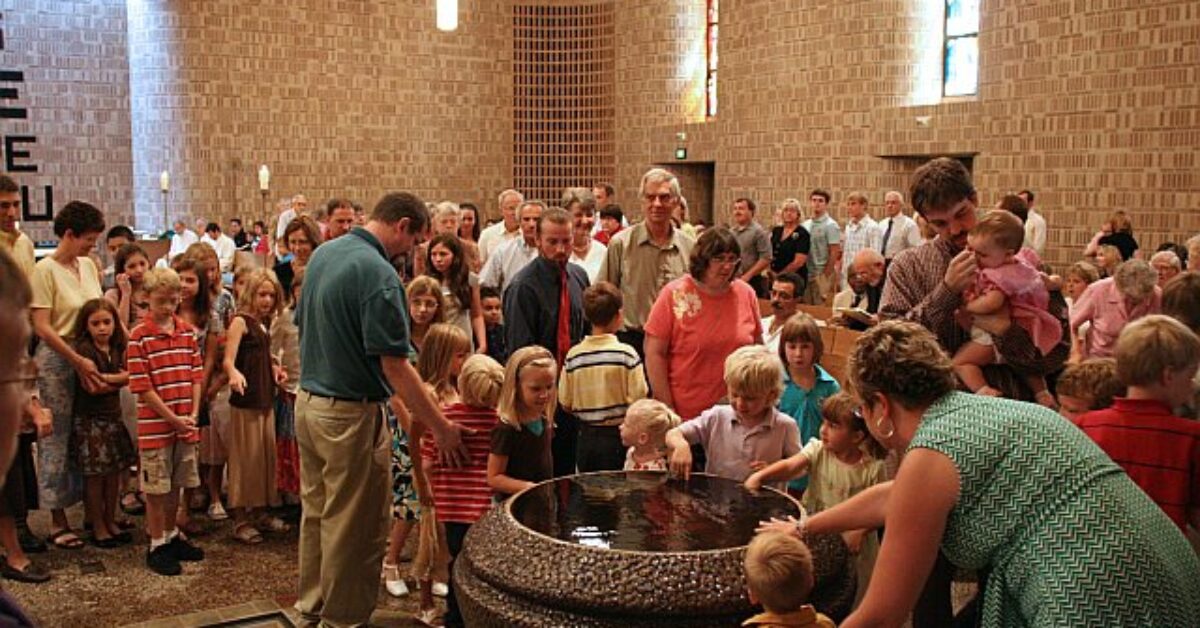Where to Begin? A Vision for Transformation
We have a Readers’ Group at my congregation and we just finished reading The Fellowship of the Ring, the first volume in J.R.R. Tolkien’s trilogy The Lord of the Rings. Hobbits are a very contented lot. Change is not something in which a hobbit believes. Adventures and journeys lead Hobbiton to question the character of a hobbit. Yet, the most prominent models of Hobbit character—Bilbo and Frodo—initially reluctantly, but willingly embrace change and the journey. So it needs to be for the journey of our adult catechumens and congregations seeking robust forms of adult faith formation. We must have a vision for transformation.
All of us know that something is just not right with our adult catechumenal formation approaches. Certainly some congregations that have the typical 10-week adult instruction class are receiving new members. But in most congregations those are professions of faith and transfers, not adult baptisms. With the increasing growth of adults who have not been baptized, the number of those who can enter a congregation’s life by profession of faith or transfer will continue to shrink. Something is not right with our adult catechumenal models. We need a vision for transformation.
Establishing such a vision starts with assessing what we are doing right now. It is comfortable and desirable to remain in the surroundings of the catechumenal Shire, thinking that all is well and good. Lethargy (catechumenal sloth!) is an attractive temptation. But too much is at stake for congregational life and mission to continue to own a dry and dormant adult formation process. Assessment begins by asking questions. What are we doing well right now? What evidence is there to support that? What are we doing poorly in adult faith formation? What evidence supports those conclusions? What is driving our adult faith formation practices? Is it being driven by a clear sense of mission? Are we baptizing a good number of adults each year? Is it fostering active lives of faith and true discipleship in those baptized, confirmed, and who profess faith within the congregation? Are our current practices transforming congregational life and discipleship?
These kinds of questions, as Leisa Anslinger indicates [A Vision for Conversion: Eight Steps to Radically Change Your RCIA Process (Collegeville, MN: Liturgical Press, 2018], helps to create a sense of urgency for transforming our adult faith formation approaches. That urgency will drive the movement toward change in how we evangelize and form disciples within the congregation. By asking these hard questions about our current faith formation we realize the significant inadequacies of what we are currently doing to disciple new Christians. Sitting on our hands is no longer an option. Transformation is needed NOW.
The entire congregation needs to participate in creating a new vision for faith formation within the congregation and for the transformation of congregational life for and through this new vision. This means being clear about your mission as a congregation and holding that mission close to your congregational heart. For example, as I’ve said elsewhere in this blog, one way to do this is to speak your mission statement regularly and repeatedly in your worship services and congregational activities (as Redeemer Lutheran Church in the Bronx does!). That mission identity is the foundation for the new vision of adult faith formation. And that new vision sustains the urgency for congregational transformation. We can’t remain in the catechumenal Shire. As Bilbo says to Frodo in the Lord of the Rings, “It’s a dangerous business, Frodo, going out your door. You step onto the road, and if you don’t keep your feet, there’s no knowing where you might be swept off to.” Let’s hope you’re swept off to the vision of a new journey in adult faith formation.
